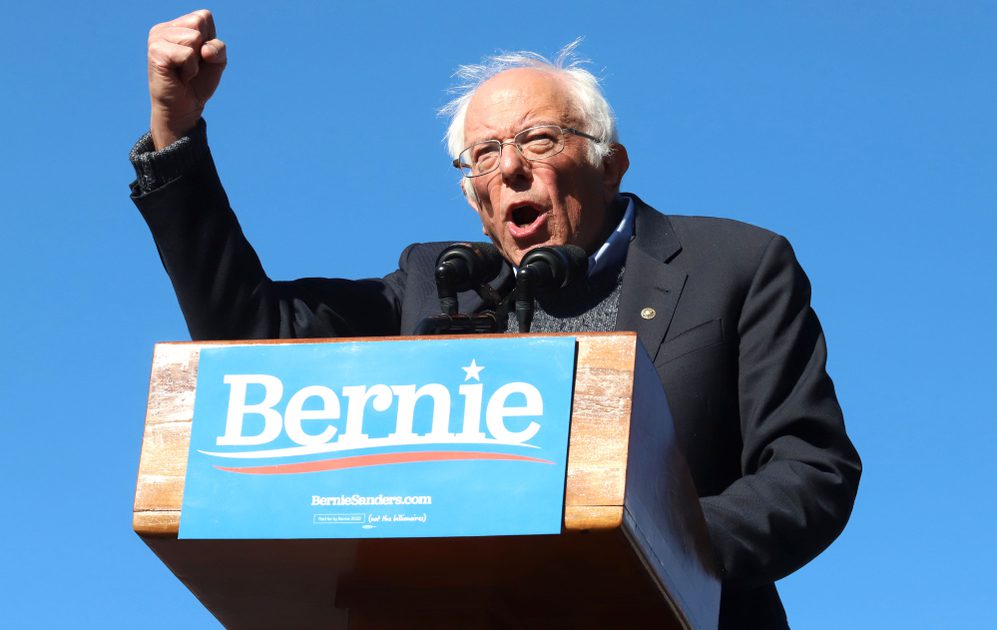How Bernie Sanders Became Your Child’s Economics Teacher

Traditional public schools don’t seem to care much about economics education. In fact, following the onslaught of mandates in other disciplines, it’s become something of an afterthought. Fewer than half of states require schools to provide an economics course. Only 17 require coursework in personal finance.
That’s a shame. Perhaps now more than ever, American students need to understand economics. Our era is marked by economic extremism marketed as meaningful change—and the public is taking the bait. Leading the charge on this front are, of course, presidential candidates Senators Bernie Sanders and Elizabeth Warren, who have released a host of radical plans endorsing everything from national rent control to free college to student debt cancelation. Sanders has also thrown his weight behind politicians like Seattle’s Kshama Sawant, who has advocated for nationalizing Amazon and Microsoft (imagine Amazon being run by the same people who brought you the DMV).
These are pretty disastrous policies, and it’s not unreasonable to think they might not have gained any traction had voters been taught basic economics in high school.
The cycle has to end. Fortunately school choice can help.
Nearly 50 years ago, the late George Stigler, a Nobel Prize winner and University of Chicago economics professor, foresaw our current predicament. In an essay titled, “The Case, If Any, for Economic Literacy,” he pointed out that the “public has chosen to speak and vote on economic problems, so the only open question is how intelligently it speaks and votes.” He added that “people are wishful, not to say romantic, in their desires, and they much prefer easy and direct solutions to their problems…. It is this wishfulness which makes the public so susceptible to the propaganda of both illiterate reformers and self-serving special interests.”
Stigler wisely recommended that we provide the tools for people to decode convoluted policy talk, empowering them to see through wonky speech and lofty promises intended to secure votes rather than good outcomes. It makes sense, then, that students who do learn economics have found it tremendously helpful. According to the latest numbers in the National Assessment of Educational Progress (NAEP), an overwhelming majority of high school seniors who had taken an economics course felt that they better understood domestic and international economics, as well as current events and public policy. More than half of students polled said that they actively seek information on economics on their own time outside of school. But where they’re getting it and whether it’s correct is anyone’s guess.
If students were to really wrestle through the basic problem of economics—that our unlimited wants go up against scarce resources—perhaps they’d more carefully consider the choices they make. That could mean taking out a loan, moving for a job, or attending a less expensive college. Perhaps they wouldn’t feel so financially despondent.
On this, public schools have dropped the ball. But public schools also aren’t the only option. Charters are changing the game.
Take a look at the BASIS Schools. Founded by economists Michael and Olga Block, BASIS is a high-performing charter school network that has secured seven of the top 10 charter school spots in the U.S. News and World Report rankings. And those schools certainly prioritize economics—their econ curriculum formally begins in eighth grade, when students tackle concepts such as scarcity and opportunity costs for a full year. Their exposure starts early, too. As soon as first grade, BASIS students use history-based interdisciplinary coursework that allows them to simulate trade in ancient Egypt, thus providing an interactive foray into the discipline. Once in high school, they’re immersed in a robust economic education that provides a deep understanding of everything from the way prices convey information to how monetary policy decisions affect their daily lives.
The result? BASIS students are flourishing. The score at which most colleges grant credit is 3, and the percentage of BASIS students who earned a 3 or higher on the AP Microeconomics test last year was 94.1 percent. The worldwide percentage, by comparison, was 67.9 percent. For the United States, it’s 66.3 percent. To top it off, 63 percent of BASIS high school graduates were admitted to the top 100 national universities or liberal arts colleges in that same year. It’s certainly not by mistake that the network’s rigorous curriculum includes economics.
Charter schools’ distinct advantage over traditional public schools is their ability to make curriculum decisions at the local level. This, combined with the market incentive to provide quality education and emphasize particular topics that traditional public schools have shrugged off, make charters the ideal environment for making these kinds of strides.
People are asked to answer economic questions in the voting booth, as Stigler noted. How they answer is determined by their exposure to the subject. Economics is just as important as math, science, and language, and it deserves the same emphasis. Charter schools stand well-poised to advance this overlooked aspect of education, and perhaps they’ll also motivate traditional public schools to step up their game. After all, these types of courses not only prepare students for college, but allow them to be better informed about the decisions they’ll face as voters. But failure by educators on this front means that students will only have the opportunity to learn from demagogues—which will ultimately wreak havoc on their lives.
Tyler Bonin is a high school teacher and Young Voices Education Fellow. You can find him on Twitter at @TylerMBonin.